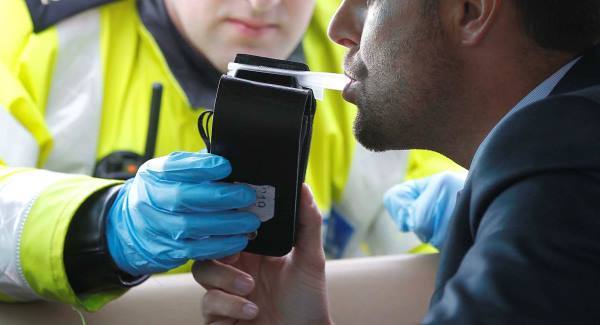Ireland now set to repay the first installment of it's €9 billion to IMF by next month
Money will be paid from cash balances held by the National Treasury Management Agency.
Minister for Finance Michael Noonan: “All bilateral lenders have now confirmed the waiver in respect of their loans to us”.
The Government expects to repay €9 billion of the State’s loans with the International Monetary Fund (IMF) in December, in what will be the first instalment of the early repayment of our bailout funds from the Washington DC-based body.
This has been confirmed by Minister for Finance Michael Noonan in a reply to a question from Fianna Fáil’s finance spokesman Michael McGrath.
“The early repayment [of the IMF loans] will take place in tranches, with the first tranche of approximately €9 billion planned for next month,” Mr Noonan said.
It is understood this money will be paid from existing cash balances held by the National Treasury Management Agency on behalf of the State.
Ireland intends to repay €18.3 billion of our €22.5 billion IMF loan, which dates back to the financial assistance programme agreed with the fund and the EU in late 2010.
Mr Noonan said this is the portion of the loan subject to the highest rate of interest. The intention was to replace it, in a “measured way”, with “less expensive market funding”.
A clause in our loan agreements with the European Financial Stability Facility (EFSF), the European Financial Stabilisation Mechanism (EFSM), and with bilateral lenders the UK, Denmark and Sweden meant that waivers from them were required to repay the IMF loans early.
“All bilateral lenders have now confirmed the waiver in respect of their loans to us, in accordance with their national approval procedures,” Mr Noonan said.
“The most recent of these was the Swedish government’s agreement on November 20th … following the Swedish parliament’s approval the previous day. The EFSF and EFSM can now complete the waiver process, which will facilitate the first early repayment.”
Garda Reserve now close to full strength 10 years after its inception
Journalists absent from Commissioner Nóirín O’Sullivan first passing-out ceremony at Templemore
The Garda Reserve is on course to achieve its target strength next year, some 10 years after the part-time unpaid element of the force was established.
It was intended that the reserve would reach 10 per cent of the full-time Garda number. But nine years after the first intake, that figure is yet to be reached.
The latest class of reservists graduated at the Garda College, Templemore, Co Tipperary, yesterday when 62 men and women from home and abroad were officially welcomed into the reserve after completing their training.
In total, 62 reservists passed out: 41 men and 21 women. While most were from the Republic, there were also reservists fromFrance, Poland, Latvia and Lithuania.
Target in sight
The passing out brought to 1,173 the full strength of the reserve, with 1,091 fully attested and 82 in training.
If current intake trends continue, the number of reservists will reach some 1,250 next year, or 10 per cent of the full-time force.
The reserve was introduced under theGarda Síochána Act 2005, with the first intake of reservists inducted the following year.
Some organisations that represent full-time Garda members were dissatisfied with what they considered efforts by then minister for justice Michael McDowell to introduce free policing.
Yesterday’s ceremony was the first passing-out event at Templemore over which Garda Commissioner Nóirín O’Sullivan has presided since her appointment this week.
However while the ceremony is usually open to journalists, who are afforded an interview opportunity with the commissioner and minister for justice of the day, only photographers were invited to yesterday’s passing out.
Media absence
Senior sources said the commissioner had already taken questions from the media at several events since her appointment on Tuesday. And they added that there was “little point” in another media event just days into her term.
The same sources said the commissioner remained committed to creating a more open and transparent force and the exclusion of journalists “should not be misinterpreted in any way”.
In September, Minister for Justice Frances Fitzgerald and then interim commissioner O’Sullivan faced a barrage of questions at a passing-out in Templemore relating to allegations that gardaí continued to cancel penalty points without reason.
Senior sources at the time believed the allegations had been leaked just before the event in an effort to put Ms O’Sullivan at a disadvantage.
Ireland’s GPs ‘unaware of their medical card powers’
Says the HSE


The ability of doctors to extend a medical card for four months was one of the measures included in the package announced earlier this week.
Some GPs in Ireland have not been made fully aware they could temporarily save a patient from losing their medical card in special cases, the Health Service
A spokeswoman was commenting after the National Association of General Practitioners said doctors encountered a wide range of problems with this facility.
Others were unaware they could extend a card via the HSE computer system even though it has been in place for two years, the GP body said.
The HSE spokeswoman said the HSE and GP representatives worked collaboratively to develop the facilities which are available to family doctors today. “It is clear that not all GPs are fully aware of all of the facilities available and the HSE will be writing again to clarify the situation with them.
“However, many GPs are aware of the facilities and currently reinstate medical cards, extend the expiry date for sensitive renewals and add babies to medical cards.
Sensitive
“To date GPs have reinstated 2,008 medical cards, completed 384 sensitive renewals, removed 19,189 medical cards and added 21,770 babies to the GMS register,” she added.
She pointed out there are “controls in place”. In instances where a family has been fully assessed and it has been established that they are not eligible for a medical card, this decision cannot be overturned by a GP. “However, if a family did not engage with the review process, for reasons of illness for instance, the lapsed eligibility for this family can be re-instated by their GP.
“The HSE will work with GPs to strengthen the facilities available to them.”
The ability of doctors to extend a medical card for four months was one of the measures included in the package announced earlier this week to reform the discretionary medical card scheme.
If the patient has a mental illness, it may be extended by the GP for a year after notifying the HSE.
Ireland records its second highest fertility rate in the EU
Significant developments and trends noted in 2012 CSO Vital Statistics report
A report on Vital Statistics 2012 published by the Central Statistics Office notes that France had the highest fertility rate at 2.01, Ireland was next at 1.99.
Ireland recorded the second highest fertility rate in the EU in 2012, the figures released by the Central Statistics Office show.
A report on Vital Statistics 2012 published by the Central Statistics Office notes that France had the highest fertility rate at 2.01, Ireland was next at 1.99 followed by the UK with a rate of 1.94. Portugal had the lowest rate at 1.28.
Referred to as the Total Period Fertility Rate (TPFR) the fertility figure represents a theoretical average number of children who would be born alive to a woman during her lifetime.
A 2.1 score is considered to be the population replacement rate – the number of births necessary to maintain current population levels.
Ireland’s TPFR has fallen by 33 per cent in the last 30 years, from 2.96 in 1980 to 1.99 in 2012. It has been below the replacement level since 1991.
The number of births to women aged 30 to 34 in 2012 was 26, 028, the highest number of all 5-year age groups and representing over a third of all births (36.3 per cent).
The percentage of births to teenage mothers remained the same in 2012 as in 2011, at 2.3 per cent (1,616) of births to mothers under 20 years of age.
Excluding 2011, it was 1963 since the percentage of births to mothers below 20 was this low.
As the decline in the rate births to mothers under 20 might suggest, Irish women are choosing to have their babies later in life and the rate of births to mothers over 40 is increasing.
In 2012, 5.6 per cent (4,007) of births were to mothers over 40. This was the highest percentage of births to this age group since 1971 when it was 5.7 per cent.
In 2012, 7 per cent of females in their 20s gave birth while 11 per cent of those in their 30s gave birth.
The average age of mothers at maternity in Ireland in 2012 was 32.0 years. This compares with 30.0 in Northern Ireland and 29.8 in England and Wales.
In 2012, 71,674 children born in Ireland. This represents a fall of 3.2 per cent (2,359)from 2011. Despite recording a fall, 2012 still saw the fifth highest number of births in Ireland since 1980.
The birth rate was 15.6 per 1,000 of the population compared with 16.2 in 2011 and 15.5 in 2002.
The report also highlights some other significant developments and trends. In 2012, just over 23.2 per cent of births were to mothers of non-Irish nationality.
The number of births outside marriage/civil partnership in 2012 was 25,179 or 35.1 per cent of all births.
Wednesday the 4th of July saw the highest number of babies born on one day (269). The lowest number of babies born on the one day was 107 on April 22nd.
There were 29,186 deaths recorded in Ireland in 2012, of which 14,945 were males and 14, 241 were females. This equates to 6.36 deaths per 1,000 total population compared with 6.22 in 2011 and 7.58 in 2002.
There were 541 deaths due to intentional self-harm in 2012 of which 445 were male and 96 female.
The risk from extreme weather is set to rise for all of us in the long term.


The UK is comparatively resilient to extreme events – but vulnerable because of high population density.
Climate change and population growth will hugely increase the risk to people from extreme weather, a report says.
The Royal Society warns that the risk of heatwaves to an ageing population will rise about ten-fold by 2090 if greenhouse gases continue to rise.
They estimate the risk to individuals from floods will rise more than four-fold and the drought risk will treble.
The report’s lead author Prof Georgina Mace said: “This problem is not just about to come… it’s here already.”
She told BBC News: “We have to get the mindset that with climate change and population increase we are living in an ever-changing world – and we need much better planning if we hope to cope.”
The report says governments have not grasped the risk of booming populations in coastal cities as sea level rises and extreme events become more severe.
“People are increasingly living in the wrong places, and it’s likely that extreme events will be more common,” Prof Mace says.
“For most hazards, population increase contributes at least as much as climate change – sometimes more. We are making ourselves more vulnerable whilst making the climate more extreme.
“It is impossible for us to avoid the worst and most unexpected events. But it is not impossible to be prepared for an ever-changing world. We must organise ourselves right away.”
The report’s team said the UK was comparatively resilient to extreme events – but still vulnerable because of the high density of people living in areas at risk.
The report says governments have not grasped the risk of booming populations in coastal cities
The report advises all levels of society to prepare – from strategic planning at an international and national level to local schemes by citizens to tackle floods or heatwaves.
Its scenarios are based on the assumption that the world stays on the current trajectory of emissions, which the authors assume will increase temperature by 2.6-4.8C around 2090. It assumes a population of nine billion.
They say they have built upon earlier work by calculating the effects of climate change coupled with population trends. They warn that the effects of extremes will be exacerbated by the increase in elderly people, who are least able to cope with hot weather.
Urbanisation will make the issue worse by creating “heat islands” where roads and buildings absorb heat from the sun. As well as building homes insulated against the cold, we must also ensure they can be properly ventilated in the summer, the report says.
The authors say cutting greenhouse gas emissions is essential. But they argue that governments will also need to adapt to future climatic shifts driven by climate change.
They suggest threats could be tackled through a dual approach. The simplest and cheapest way of tempering heatwaves, they say, is to maintain existing green space. Other low-cost options are planting new trees, encouraging green roofs, or painting roofs white to reflect the sun.
The authors say air conditioners are the most effective way of keeping cool – but they are costly, they dump heat into city streets and their use exacerbates climate change.
Flooding is another priority area, the report says. It finds that large-scale engineering solutions like sea walls offer the most effective protection to coastal flooding – but they are expensive, and when they fail the results can be disastrous.
Urbanisation creates heat islands which can exacerbate the effects of hot weather
The ideal solution, the authors think, may be a combination of “hard” engineering solutions like dykes matched with “soft” solutions like protecting wetlands to hold water and allow it to seep into the ground.
A scheme at Pickering in Yorkshire previously featured by BBC News is held as an example. The report concludes more research is needed to measure the effectiveness of these ecosystem solutions.
It insists that governments should carefully prioritise their spending. They should protect major infrastructure like electricity generation because of its knock-on effect on the broader economy. They should expect some lower-priority defences to fail from time to time, then work to minimise the consequences of that failure .
The authors identify excess heat as another potential threat to economies and agriculture if temperatures climb too high for outdoor workers.
They examine projected rises in the “wet bulb” index used by the US Army and others to measure the temperature felt when the skin is wet and exposed to moving air.
Some areas may experience many weeks when outdoor activity is heavily restricted, they fear – although the trend of agricultural labour loss may be offset through the century as more and more people move to cities.
It puts a figure on those at greatest overall risk: populations in poor countries make up only 11% of those exposed to hazards but account for 53% of the disaster deaths.
Some economists argue this shows that poor nations should increase their economies by burning cheap fossil fuels because that will allow them to spend more later on disaster protection.
The authors also call for reform of the financial system to take into account the exposure of assets to extreme events.
They say: “Unless risks are accurately evaluated and reported, companies will have limited incentives to reduce them. And valuations and investment decisions will continue to be poorly informed.”
One author, Rowan Douglas, from the Willis Research Network, said he suspected this might be the most significant contribution of the report.
The authors want organisations to report their maximum probable losses due to extreme events, based on a 1% chance of the event on any given year.
“The 1% stress test is not as extreme as it might sound – it implies a 10% chance of an organization being affected once a decade,” they say.
They say decisions made over the next few decades as the world builds vast urban areas will be key to the resilience of people by the end of the century.


























